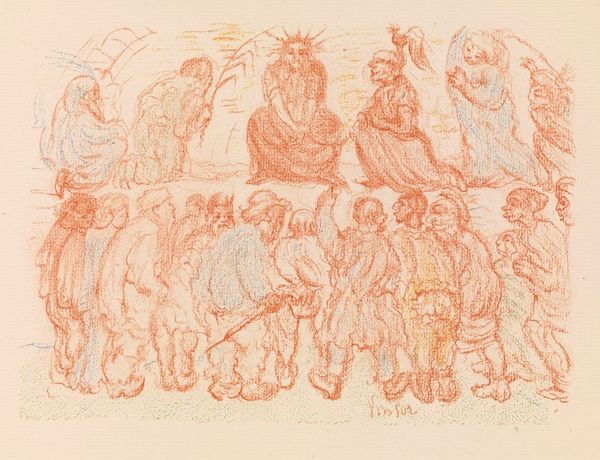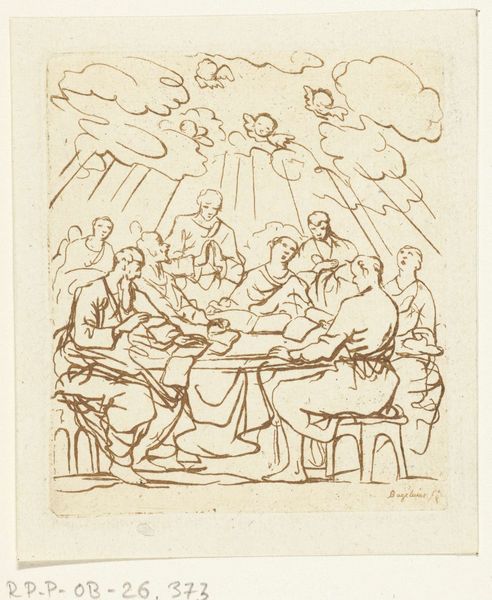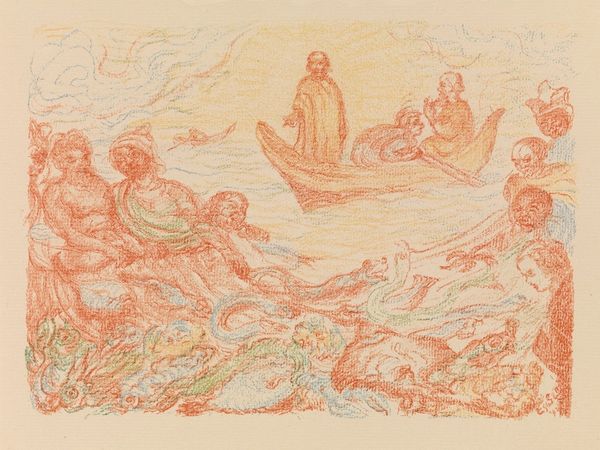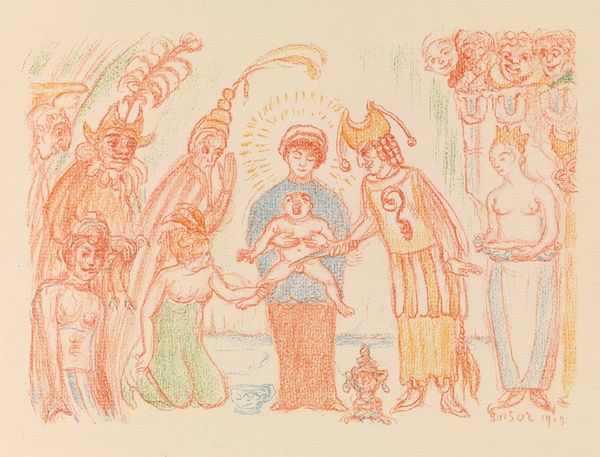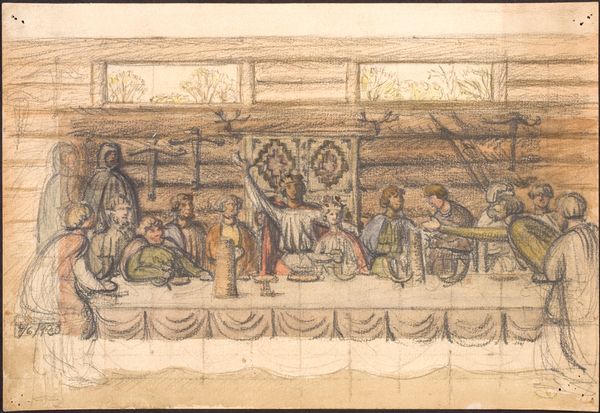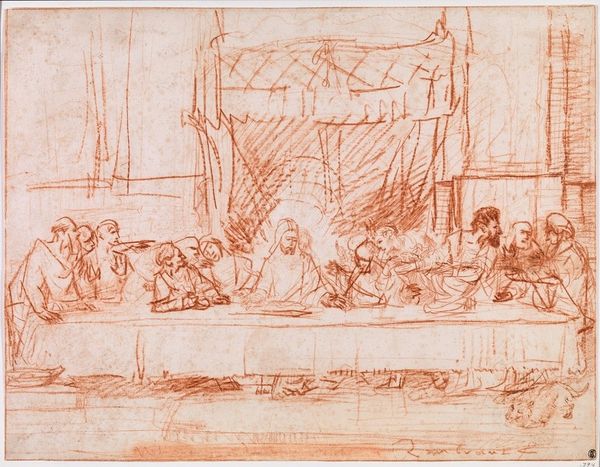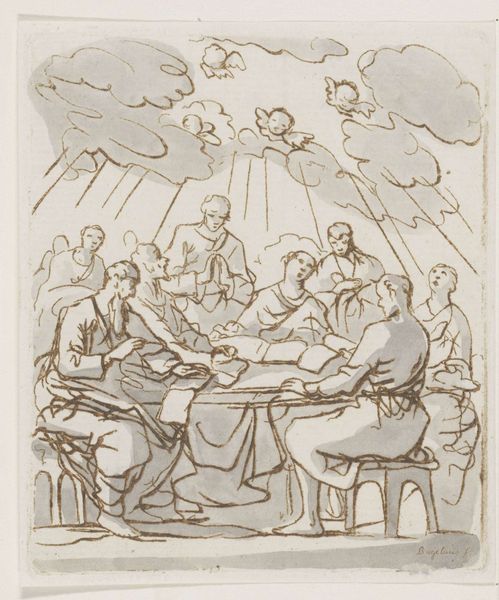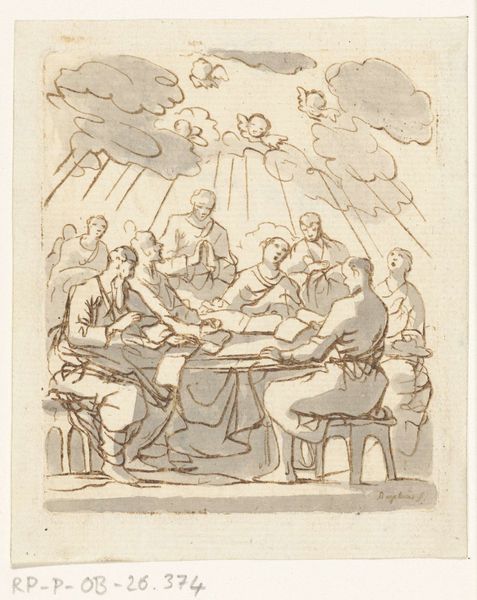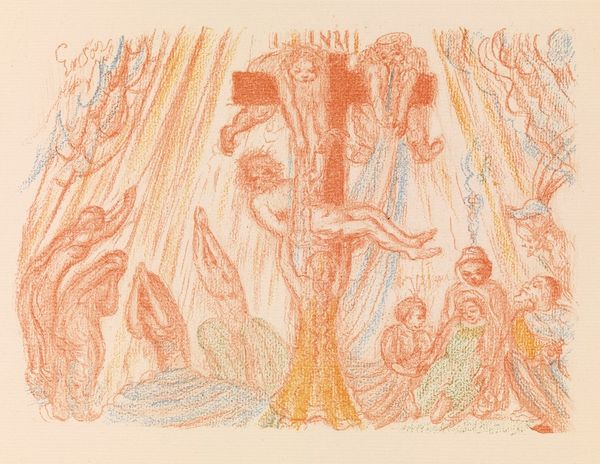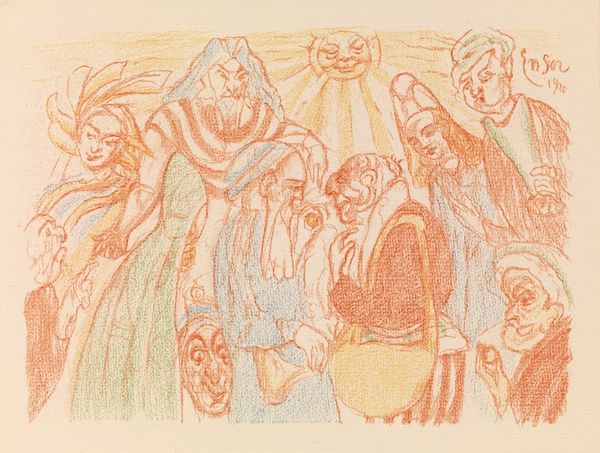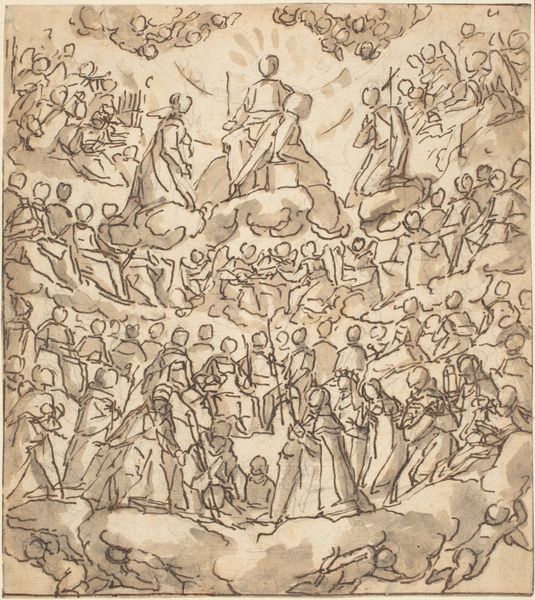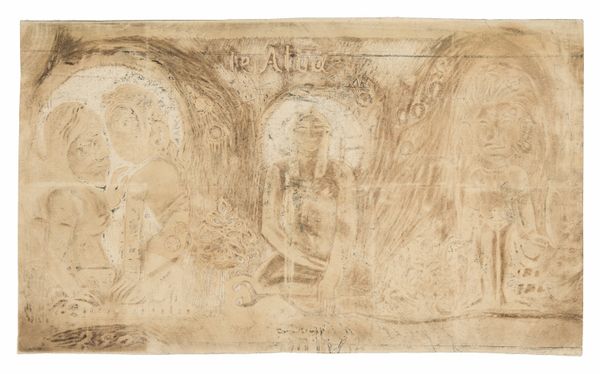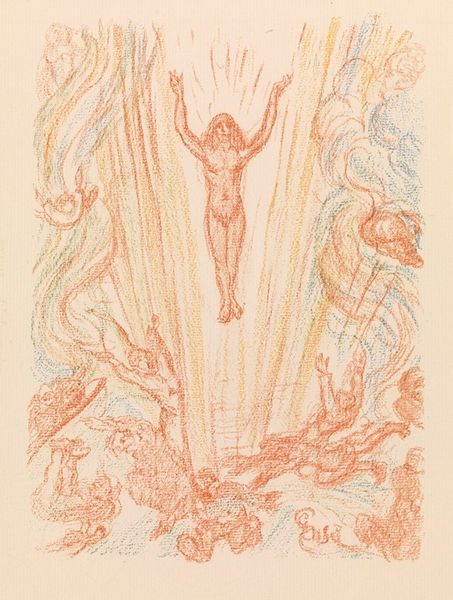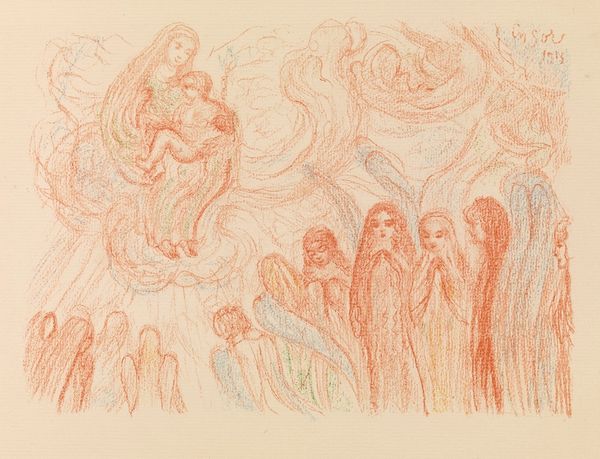
Copyright: Public Domain: Artvee
Curator: James Ensor created this piece, “The Last Supper,” in 1921, using a mix of media, including pencil, pastel, and ink, in a print form. Editor: It’s remarkably ethereal, almost like a memory fading. The soft pastel colors give it this delicate, dreamlike quality. Curator: Absolutely, the symbolism here is profound. Ensor revisits a seminal scene of Western religious iconography. But what is revealed? This feels like a vision distorted through time. Notice how the figures seem caught between the earthly and the divine, accentuated by that sun-like halo emanating behind Christ. Editor: And it's all rendered with such tactile materials! The texture of the paper comes through; you can practically feel the individual strokes of the pencil and pastel. It makes me think about the physicality of belief, how it's grounded in everyday experience and labor. Curator: Indeed. Consider the placement of Christ in the center; Ensor uses the iconography to evoke empathy. I am compelled to ponder, what aspects of the original narrative is Ensor pointing out, and how are the print materials assisting this emotionality? Editor: The looseness of the line work undermines any sense of divine authority. See those animals underneath the table. Ensor's hand is so present; the labor of making is so apparent that the spiritual content almost seems beside the point. It's all about the earthly process of creation. Curator: A provocative notion! The materiality serves the message, doesn’t negate it. Think of how the light plays in this composition, reminiscent of stained glass and spirituality and of higher understanding that transcends pure logic. Editor: So much weight is assigned to the labor of art, often without examining its effect on artistic symbolism! If those animals, created using the very same pencils, are any indication, I think the real message of the material labor of art takes center stage. Curator: Food for thought! Ensor has a knack for layering symbolic weight into seemingly simple drawings, inviting us to reconsider not just the scene but its enduring significance. Editor: And he makes us consider the very physical act of making that imagery, reminding us that these narratives are built and disseminated by human hands, human choices, human labor.
Comments
No comments
Be the first to comment and join the conversation on the ultimate creative platform.
